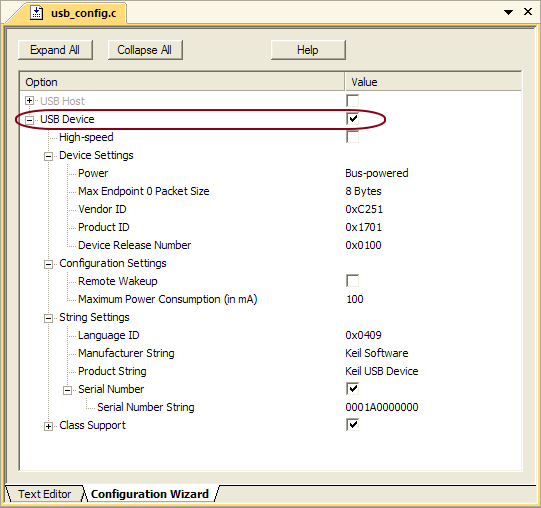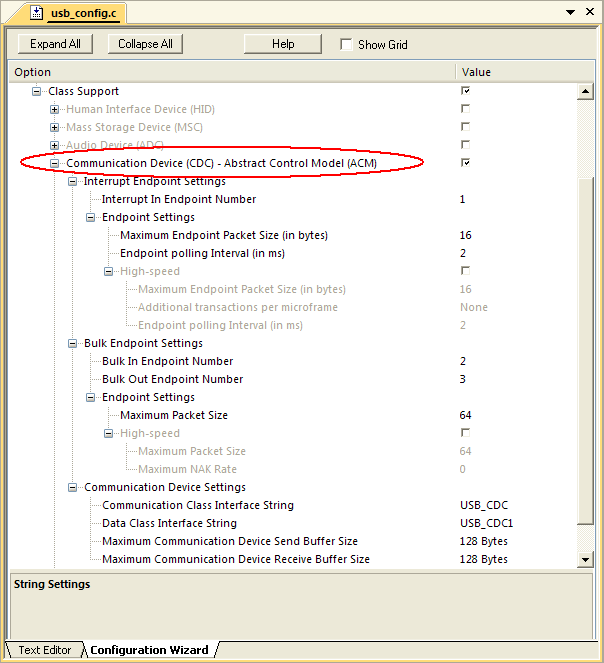|
||
| Products Download Events Support Videos | ||
Technical Support
On-Line Manuals
RL-ARM User's Guide (MDK v4)
Create CDC ACM Applications
Create CDC ACM Applications explains how to program a USB Communication Device of Abstract Control Model type using the RL-USB Library. Communication applications control networks, serial and wireless communication interfaces, telecom devices, modems, printers, scanners.
Include into the project and configure the following RL-USB Device Source Files:
-
The library that matches the device core:
USB_CM1.lib - for Cortex-M1 devices.
USB_CM3.lib - for Cortex-M3 devices.
USB_ARM_L.lib - for ARM7 or ARM9 devices. - usb_config.c - to configure the USB system.
- board_name-vcom.inf - to configure the driver information file.
- usbd_device family.c(.h) - to configure the device hardware layer.
- usbd_user_cdc_acm.c - to adapt the code to the application needs.
-
USBD_Demo.c - to initialize and connect the USB Device
from main().
.. usbd_init(); // USB Initialization usbd_connect(__TRUE); // USB Connect while (!usbd_configured ()) // Wait for device to configure // Send message over USB Vitual COM Port // to the USB Host USBD_CDC_ACM_DataSend ("Send data over USB Virtual COM Port.", 36); ..
Applications can be created using existing µVision CDC ACM projects. The RL-USB communication examples use two simple functions that send the signals from the USB Virtual COM port to the boards Serial COM port and vice versa.
- Copy all files from any folder \ARM\Boards\Vendor\BoardName\RL\USB\Device\CDC_ACM to a new folder and open the project *.uvproj with µVision. RTX projects are using the RTX-RTOS, whereas simple CDC projects work without an RTOS. However, the USB configuration does not differ.
- Open the file usb_config.c and configure the USB device with the Configuration Wizard.
-
Enable USB Device and set the device characteristics.

- Adapt the file board_name-vcom.inf whenever the Vendor ID and Product ID has been changed. (See picture above).
-
Enable Class Support and Communication Device (CDC) -
Abstract Control Model (ACM) and set the characteristics.

- Optionally, adapt the source file usbd_device family.c that contains hardware dependent code.
- Modify the file usbd_user_cdc_acm.c to adapt the code to the application needs.
Note
- The options are explained in Communication Device (CDC) - Abstract Control Model (ACM) Options.
ProductsDevelopment Tools |
Hardware & Collateral |
Downloads |
Support |
Contact |
